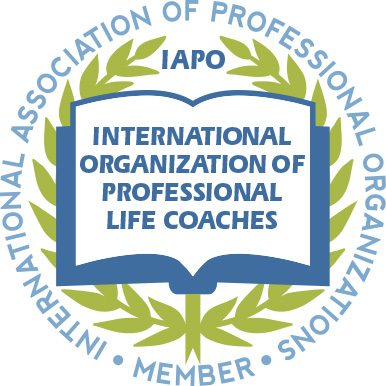The pursuit of work-life balance is an ongoing challenge for many. Establishing and maintaining boundaries between the professional and personal elements of our lives is more difficult than ever. In fact, sometimes it can be downright impossible.
Today, we explore creative and inventive strategies that can help us in our sometimes-daunting quest to establish and maintain a harmonious work-life balance.
And, perhaps more importantly, what to do if and when that balance and our boundaries are compromised to preserve our own peace and well-being.
Why Work-Life Balance May Be a Fantasy
The solid line between personal and professional life has become harder to see in the last few decades.
Increases in remote work and technology advances have contributed to the blurring of what used to be somewhat solid, black lines.
Today, salvaging any semblance of border between the two can be almost futile.
Why has it become so challenging?
What has changed to make work-life balance more elusive than ever before?
The Myth of a “Home Office”
When your “home office” is actually the kitchen table or another nook in your home, it becomes difficult to separate from work at a given hour.
Your desk is right there. A constant reminder of work left undone or in progress. A space you associate with meetings, problem-solving, and stress – smack dab in your face, 24/7.
It seems to taunt you as you try to prepare or eat a family meal, do other household chores, or even just have a quiet conversation with your life partner or children.
The kids come home from school. They’re also in your face! They want your attention, and food, and advice, and if you’re lucky, a hug and a kiss and they want to tell you about their day.
Children don’t realize you’re acting in another identity. That you’re working a different schedule. They just know you’re there, and they want some of you.
This lack of physical separation between home and work that has become a greater challenge to many, as we do what we did before, except we do it in the midst of the home that was once our oasis and in the company of the people we hold most dear.

We’ve Lost the Commute We Always Complained About
Then there’s the lack of commute. As much as we always complained about traffic and driving, it did provide an opportunity to transition from one aspect of our lives to another.
But now, many of us have no more commute to decompress and/or fire off those last few calls we hoped to make before closing out the workday.
We’ve lost that buffer, that time when we could process the day and file away the take-aways, the ability to create a plan for the next day, or the evening ahead. To ditch our work persona and don our Supermom cape.
That time to slip out of one identity into another is gone. Poof.
The Impact of Technology
Technology, our one-time friend, is now often our enemy. Advances have compromised virtually every boundary we once had.
There was a time when you could put your cell phone or pager away for the day (unless you were on-call 24/7), knowing that any personal emergency that came up would likely reach you through your home phone.
Now, the cell phone is our full-time multi-purpose connection to the world.
Everything comes through that one device. We can’t watch for a text from the kids (Mom, can you come pick me up?) and not see the other texts vying for our attention.
And it takes discipline to avoid clicking on that email icon or TEAMS chat or Facebook message or all the other places where people have dropped a line awaiting our response – when we keep checking to see what the kids are up to.
Now, in addition to the phone, we have texting, instant messaging, e-mails and multiple social media platforms that anyone can use to reach us – whenever and however they choose.
It’s hard to believe today, but there was a time when you could board a plane and enjoy peace and quiet for a few hours because no one could communicate with you. That one small perk of business travel (an opportunity to think and process undisturbed) is now gone, too.
This goes for both co-workers and colleagues as well as our family and friends.
Talk about no boundaries!
Why We Need to be Resilient When Seeking Work-Life Balance
As a result of these factors, we need to rescope our goals when it comes to work-life balance.
We still need to try to establish a balance and maintain it, for sure.
But we also must cultivate our own resilience, enabling ourselves to bounce back when those boundaries are compromised, as they inevitably will be.
Because it happens. More than ever before!
The disruptions happen more and more frequently and come from all sides.
We can’t even read an article on-line without being distracted and interrupted a dozen times by pop-ups and advertisements.
These constant stimuli prevent us from focusing, from enjoying quality time, from making sound decisions, from even just enjoying the moment in which we live.
Why We Have to Try Anyway
We must do what it takes to preserve privacy in parts of our lives.
There needs to be time that we keep sacred and cherish. When we focus on just one thing at a time.
Making a commitment to salvage this precious resource is self-affirming, helps us to reduce or withstand stress, and nourishes the personal relationships so key to our overall well-being.
We must designate some time as our own. Time when we attend to our own personal needs and the needs of our loved ones without distractions from work or other outside sources.
Work Strategies to Help Maintain Work-Life Balance
It seems like it should be simple. It’s not. But it is possible.
Taking a systematic approach to what can be a perpetually unpredictable set of circumstances can be a game changer.
It takes some discipline, but with focus, a semblance of work-life balance (or a reasonable facsimile) can be yours once again. Try these strategies to create some containment around your work life:
- First, identify all essential work tasks and designate your highest priorities at work. Determine the frequency and level of effort you need to devote to each of these priorities and schedule time to devote to these tasks on your calendar.
- Flexible work arrangements can help if they will help you to better shape your professional work schedule around your personal life. Explore how a change in your schedule, reduced hours, remote work, or a compressed workweek may help. Taking control can nurture our own sense of autonomy which can be empowering, even if it doesn’t wind up saving time or building better boundaries. Mindset can be everything.
- Establish boundaries. Learn to say no to “optional” tasks or commitments that do not align with priorities. This is vital to preserving work-life balance. By prioritizing tasks and responsibilities, we can allocate time and energy to pursuits that align with our values and goals, reducing the risk of burnout and creating space for personal well-being.
- Harnessing digital tools and resources can streamline workflows, freeing up time to pursue personal interests and leisure activities. Productivity apps, time management tools, and virtual communication platforms can optimize work efficiency and create space for meaningful non-work pursuits.
- Model the behaviors you appreciate in others by respecting their personal boundaries.
- Incorporating strategies, such as time blocking, Pomodoro technique, or personalized planners, can aid in balancing work and personal commitments. Setting achievable, actionable goals within defined time frames empowers us to make progress in both professional and personal spheres without feeling overwhelmed.
- Ask for help. Delegate responsibilities to coworkers, family members, or childcare providers to lighten your load and reduce stress. Remember that it is okay to seek support and share the workload.
Personal Strategies to Help Achieve Work-Life Balance
Cultivating mindfulness practices and prioritizing self-care are essential components of maintaining work-life balance. Meditation or yoga can help us to manage stress, enhance resilience, and nurture mental and emotional well-being amidst professional demands.
Practice mindfulness and be present in the moment.
Mindfulness techniques such as deep breathing can help reduce stress, increase focus, and promote a sense of calm amidst busy schedules.
Self-care is also key for maintaining balance and well-being.
Prioritize exercise, hobbies, or spending time with loved ones. Make time for activities that bring you joy and relaxation to recharge and rejuvenate both mentally and physically.
Building a strong support network and fostering community connections can be instrumental in navigating the complexities of work-life balance.
Engaging with like-minded people or joining professional and social groups can provide valuable resources, guidance, and a sense of belonging.
How to Achieve Work-Life Balance and What to Do If You Can’t
Finding a balance between work and personal life is essential for overall well-being and satisfaction. But for many, juggling career responsibilities, family commitments, and personal interests can be challenging.
Maintaining work-life balance, once it is achieved, is an ongoing process that requires conscious effort and self-awareness.
We can strive for work-life balance through self-advocacy. Negotiating for advancement, seeking mentorship, and investing in ongoing learning and skill development can cultivate a sense of fulfillment and growth in professional endeavors, while allowing us more autonomy to establish our own norms, culture, and boundaries.
Open and honest communication is also essential in both professional and personal relationships.
We must learn to clearly communicate our needs, boundaries, and expectations with colleagues, supervisors, and family members, and to do so without guilt. Effective communication helps us to set realistic expectations and garner support from those around us.
Finding equilibrium between work and personal life also requires adaptability, self-awareness, and innovative approaches.
Keep in mind that balance looks different for everyone, so it is essential to find what works best for you and prioritize your well-being above all else.
If all else fails, it may be time to consider other options. Check out:
Is It Time for a New Job? 9 Sure Signs
Thank you as always for reading.
If you haven’t yet subscribed, please visit KindCompassCoach and enter your email address so you never miss a post.
As Amazon Associates, we may receive a small commission (at no cost to you) for items purchased through links in this post.

Joan Senio is the founder of KindCompassCoach. Joan’s career includes clinical healthcare plus 20+ years as an executive in a nationwide health care system and 15 years as a consultant. The common threads throughout Joan’s personal and professional life are a commitment to non-profit organizations, mental health, compassionate coaching, professional development and servant leadership. Joan has had the privilege of mentoring early and mid-career professionals as well as current and future executives and leaders. She is a member of the International Organization of Life Coaches, serves as a thought-leader for KuelLife.com and is also a regular contributor to PsychReg and Sixty and Me. You can read more about Joan here: Joan Senio.





No Responses